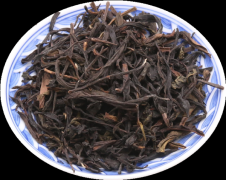How to distinguish the phoenix single fir tea with yellow branch fragrance in Song Dynasty? Good Song kind of single fir tea. What does it taste like?
This is a sentence I often hear, and to some extent, I agree. Everyone likes different things and has different tastes. If you like it, who am I to say that it is bad? I found that from the point of view of a tea vendor, this attitude does not solve the problem very well. in fact, it is a bit escapist. As a tea supplier, our goal is to bring you the best tea we can find and to show you something unique and of high quality. But how do we judge its quality? Although we do take tea very seriously, we do not judge or grade every kind of tea we sample, nor do we check them against specific criteria. What's the fun of that? Having said that, we usually consider three specific factors when deciding whether the tea we drink is "good tea". There is also a hint that it is not just "smells and tastes good". The aroma of tea can you taste the aroma of tea in the tea soup? Is the aroma of the tea reflected in the taste, or does the tea smell good, but when you go to make tea, all you can taste is water? Usually, low-quality tea, or tea with spices or essential oils, smells good, but when you brew them, the aroma disappears quickly, and the rest of the tea is light and tasteless and tastes like water. What you smell is not what you taste. In fact, the smell is usually single. With good tea, what you smell is what you taste, or even more. The aroma of good tea is complex, when you drink tea, it will gradually show to you. So, in addition to considering whether we just like the taste and aroma of a kind of tea, we also consider whether you can taste the aroma of the tea. Is there a pleasant aftertaste of your tea, but more importantly, a lingering aftertaste? We have found that the taste of shoddy tea tends to disappear quickly, and sometimes it makes you want to drink it even before you swallow it. Good tea will leave a pleasant and lingering aftertaste after you drink it. As one tea producer explained to us (we explain here + translate): think about where the taste of the tea you drink stops. The taste of poor-quality tea almost stops abruptly at the tip of the tongue (too thin to stick), while the taste of other teas spreads to the tip of the tongue (better, but still makes you want to drink). The aftertaste of good tea will remain in your throat, while the aftertaste of the best tea will stay longer and return from your intestines.

Now, we are not saying that good tea will make you spit it out; more importantly, how long will the aftertaste and feeling of tea stay after you finish it? Once you have the opportunity to experience it and understand what it needs to pay attention to, you will really experience the taste, but this is definitely one of the factors to consider when we judge whether a kind of tea is good or not. Texture of Dahongpao Rock Oolong Tea everyone is talking about the taste and aroma of the tea, but surprisingly few people talk about the texture of the tea. Maybe it's because for many people, the texture of tea is not good at all, and it is very thin and thin. But when it comes to Chinese tea, the taste is as important as the taste. When with Chinese tea drinkers and tea tasters, they usually evaluate the texture of the tea (it is smooth, rough, etc.) before talking about the taste or aroma. Different types of tea will have different tastes, but generally speaking, no matter what kind of tea, you want smooth, thick, tasty tea. You shouldn't feel like you're drinking seasoning water, because good tea is much more than that. Tea should not be rough, although it sounds strange, but the taste of low-quality tea can only be described as rough. Although each different tea type-white, green, oolong tea, red / black and dark tea-also has specific class standards, we will not in this article, if you always keep in mind the above three points you try a new tea, it may open your experience and great quality to tea when you encounter it. You can think of it as a basic framework on which you can begin to experience different teas in a deeper and more meaningful way.
Important Notice :
前街咖啡 FrontStreet Coffee has moved to new addredd:
FrontStreet Coffee Address: 315,Donghua East Road,GuangZhou
Tel:020 38364473
- Prev

What are the fragrant types of Dancong tea? Where does Huangzhi fragrant Phoenix single fir buy more authentic?
Fenghuang Danzong tea is a kind of oolong tea from Guangdong in southern China.
- Next

Characteristics and differences between Phoenix Dancong, Tieguanyin, Dahongpao Rock Tea and Taiwan Oolong Tea
What is oolong tea? To put it simply, oolong tea is a semi-oxidized tea between green tea and black tea. The oxidation rate of green tea is very low, close to zero, while the leaves of black tea are completely oxidized. The oxidation degree of oolong tea is between green tea and black tea. The oxidation degree of some tea is about 10-20%, while that of some tea is about 10-20%.
Related
- The milk tea cup becomes smaller?! Overlord Tea Girl launches a new "Return to Yunnan" series
- Accused of selling counterfeit and high-priced coffee beans! Well-known boutique coffee brand "Oukelao" bowed and apologized!
- How to make espresso dumplings? Can I eat coffee and glutinous rice balls together?
- Save the unformed and stagnant powder cakes in one second! What is the problem with stagnant water in the powder bowl of the espresso machine?
- What does hand-brewed coffee stop mean? Why is it not recommended to make coffee by hand?
- Is it normal to smell like coffee? Why does coffee smell like alcohol? What's wrong with the strong smell of cold extract ice dripping ice brewed coffee?
- How to solve the problem that hand-brewed coffee extraction takes too long? Why is the water flowing so slowly when making coffee?
- The main points of making Australian white coffee, the proportion details, how does Australian white properly foam and blend the flowers?
- Can ice water make cold extract coffee? What is the difference between room temperature water and ice water for making cold coffee?
- What milk is best for making latte and white Dirty coffee? What is the difference between different brands of fresh milk and pure milk for making coffee?

